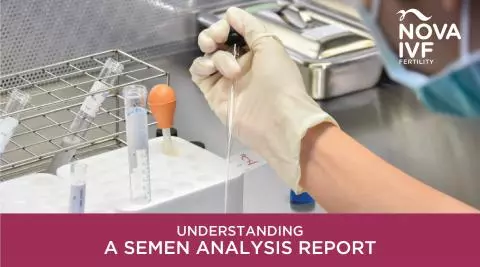Azoospermia Diagnosis: Impact on Male Fertility

Azoospermia is a condition that affects around 1% of the male population and it is one of the main causes of male infertility. This condition is defined by no sperms in the male ejaculate. Sexual reproduction is facilitated by the production of sperms which fertilize the eggs in the female. The lack of sperm impairs the reproduction process completely.
Causes of Azoospermia
Azoospermia can be obstructive or non obstructive. Non obstructive Azoospermia can be the result of congenital defects or hormone imbalances. Swelling of veins in the scrotum can also cause Azoospermia. Obstructive Azoospermia is caused by blockages which prevent sperms from following the natural flow during sexual intercourse and ejaculation. Retrograde ejaculation is a condition where sperm travels back to the bladder during ejaculation.
How is Azoospermia diagnosed?
Obstructive and non obstructive Azoospermia usually have different causes and hence the diagnosis methods are different. They may overlap to ensure that the initial diagnosis is complete and right. The common methods followed by the doctors to get Azoospermia and its causes diagnosed:
- Semen analysis - This is to confirm that there are no sperms in the ejaculate. Presence of sperms would indicate that the condition is not Azoospermia.
- Physical examination of the male reproductive area to identify any abnormalities or pain
- Determination of hormone levels (FSH, LH, testosterone) - These tests are conducted to identify possible hormone related issues tcausing Azoospermia
- Biopsy - Testicular biopsy can be used as diagnostic as well as therapeutic method to obtain sperms.
It is very important that you reach out to a reputed specialist for tests and analysis to get your possible case of Azoospermia diagnosed. The latest technologies used to diagnose the condition include the centrifugal concentration of samples to prevent the chances of misdiagnosis. Reach out to a fertility or male health specialist to learn more about Azoospermia and the options you have.
 Infertility Counselling
Infertility Counselling Female Infertility Treatment
Female Infertility Treatment Andrology Treatment
Andrology Treatment Fertility Enhancing Surgeries - Female
Fertility Enhancing Surgeries - Female Fertility Enhancing Surgeries - Male
Fertility Enhancing Surgeries - Male Endoscopy Treatment
Endoscopy Treatment IUI Treatment
IUI Treatment IVF Treatment
IVF Treatment ICSI Treatment
ICSI Treatment Advanced IVF Solutions
Advanced IVF Solutions Embryology
Embryology Vitrification Egg, Embryo, Sperm Freezing
Vitrification Egg, Embryo, Sperm Freezing Preimplantation Genetic Testing (PGT)
Preimplantation Genetic Testing (PGT) Donation Program Embryo / Egg / Sperm
Donation Program Embryo / Egg / Sperm Self-cycleTM IVF
Self-cycleTM IVF

 Self-cycleTM IVF
Self-cycleTM IVF










